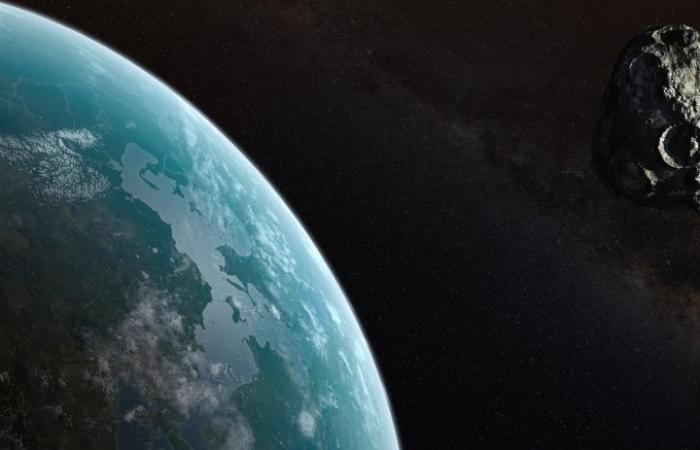On September 29, Earth captured a near-Earth asteroid named 2024 PT5 which will accompany our planet in its orbit around the Sun for the next two months. Measuring approximately ten meters wide, the equivalent of a school bus, this celestial object was attracted by Earth’s gravity during a close pass. Although this event may seem fascinating, 2024 PT5 will be a “mini-moon” almost invisible to observers.
The discovery of 2024 PT 5
The asteroid 2024 PT 5 was spotted several weeks ago thanks to the ATLAS (Asteroid Terrestrial-impact Last Alert System), a network of observatories designed to monitor the sky and detect asteroids that could hit Earth.
Upon its discovery, researchers were able to confirm that 2024 PT 5 represents no danger for our planet. Instead, it will begin a brief orbit around Earth before heading back into space during the month of November.
The astronomers behind this discovery also succeeded in calculating the trajectory of 2024 PT 5, but also in estimating its origins: the Arjuna asteroid belt. This fascinating region of the solar system, distinct from the main belt between Mars and Jupiter, is made up of objects subject to particular trajectories which are very close to that of the Earth, both in terms of shape and duration. In particular, they follow elliptical orbits which regularly bring them closer to our planet. These asteroids are also small, measuring a few tens of meters.
A mini-moon difficult to observe
Asteroid 2024 PT5 will unfortunately be much too small to be visible to the naked eyebeing about 300,000 times smaller than our permanent moon. Astronomers even think it will be too faint to be observed with amateur telescopes or binoculars. In other words, only one professional imaging could allow us to see the object. Therefore, astronomy enthusiasts will have to wait for observatory researchers to share images of 2024 PT5.
A unique opportunity for space exploration
This capture by Earth is not a new event. The planet has likely hosted millions of mini-moons over time. The first asteroid observed by humans in this setting was 2006 RH120, which remained in orbit around Earth for 18 months from 2006 to 2007. Another notable example is 2020 CD3 which spent three years in orbit before moving away in 2020.
Beyond its curious aspect, the presence of mini-moons like 2024 PT5 raises interesting questions about space exploration. Richard Binzel, an astrophysicist at MIT, suggests that these temporary companions could serve as “stepping stones” for more ambitious exploration missions. The idea would be to exploit these asteroids to facilitate travel to destinations like Mars or other celestial bodies.
The proximity of 2024 PT5 to Earth also makes it possible to better understand the dynamics of objects that orbit our planet. By studying these asteroids, scientists could notably gain valuable knowledge about the formation and evolution of our solar system.






